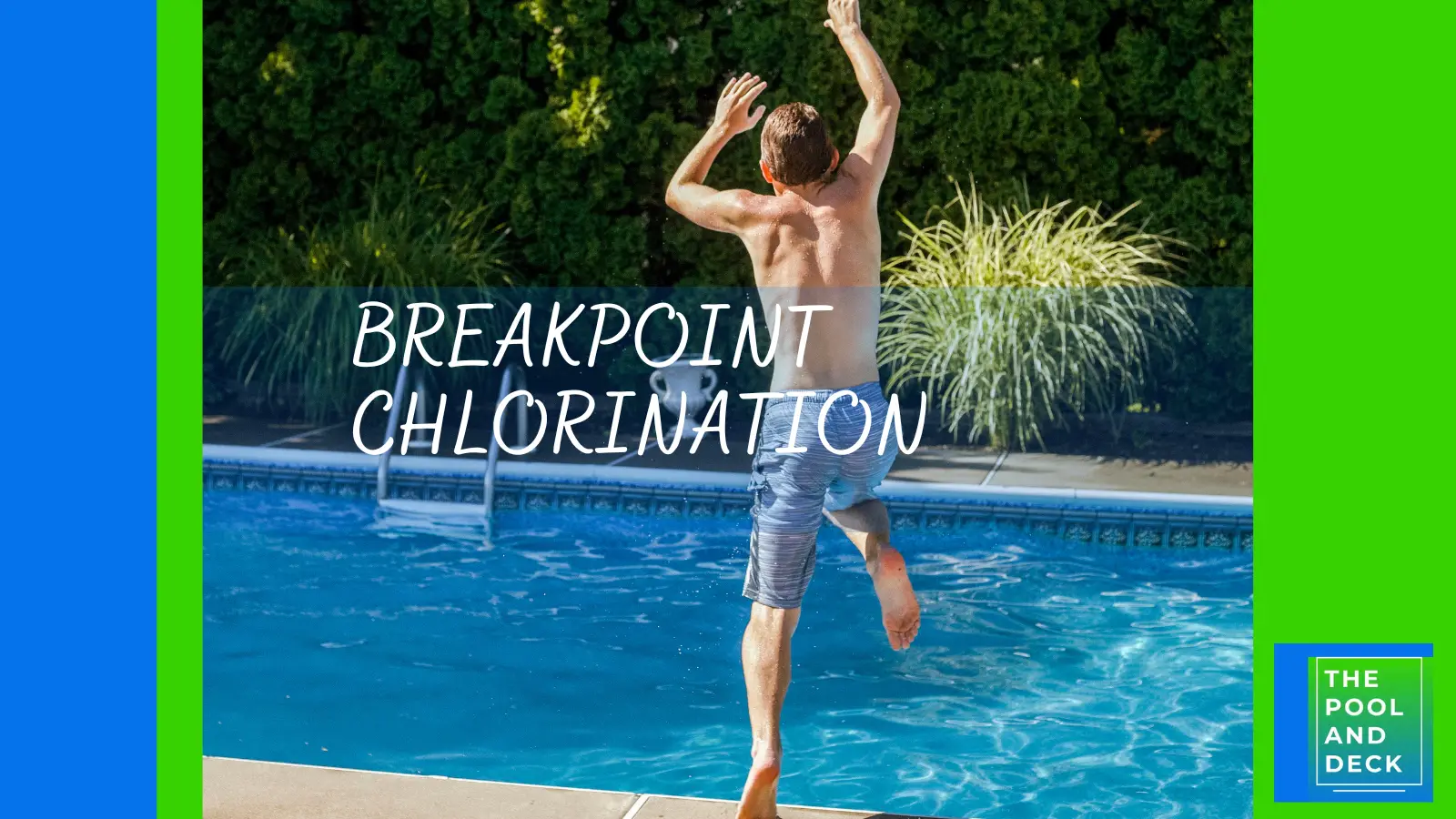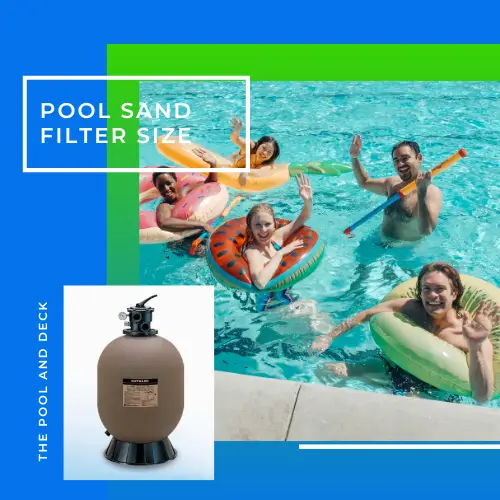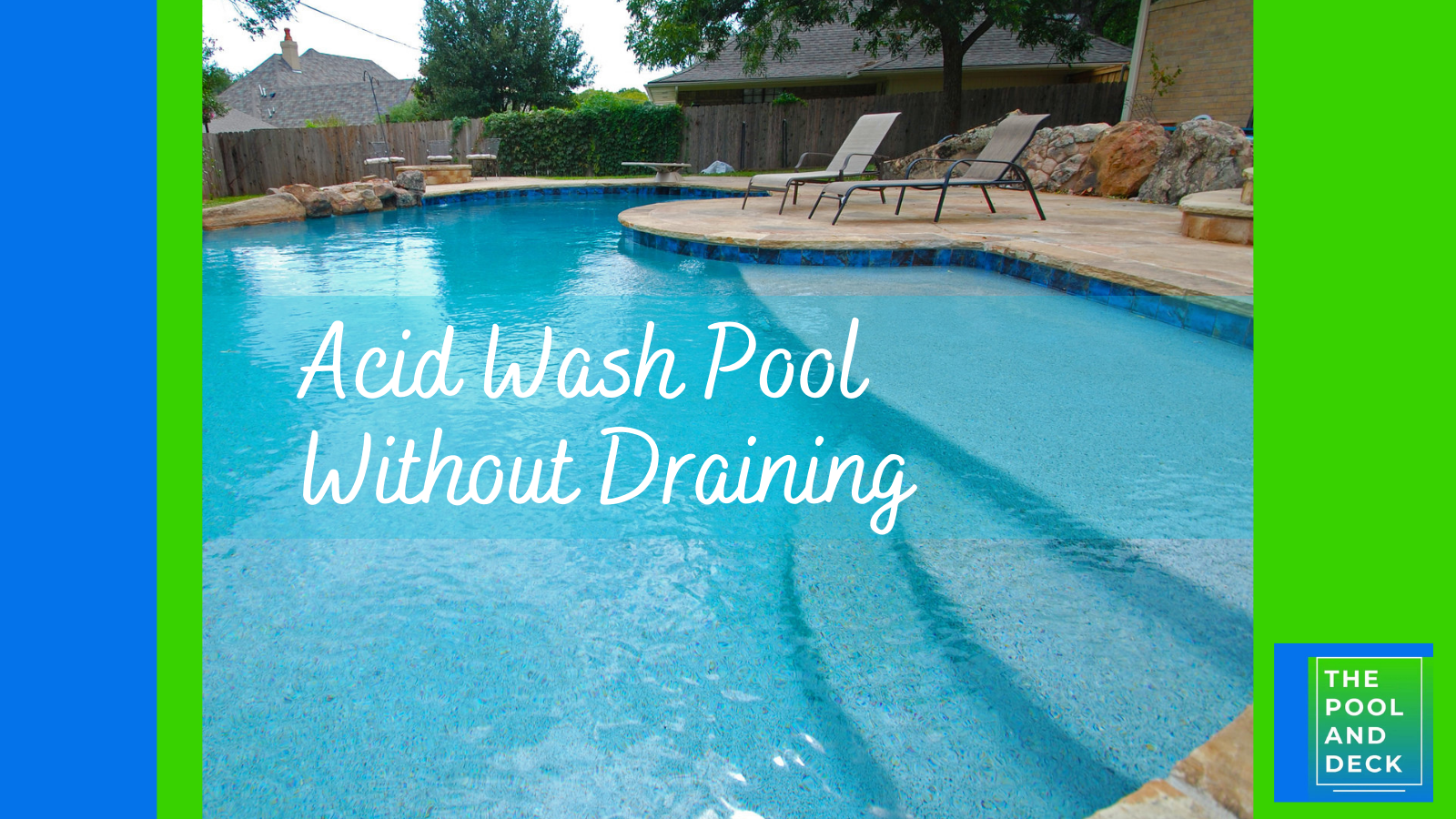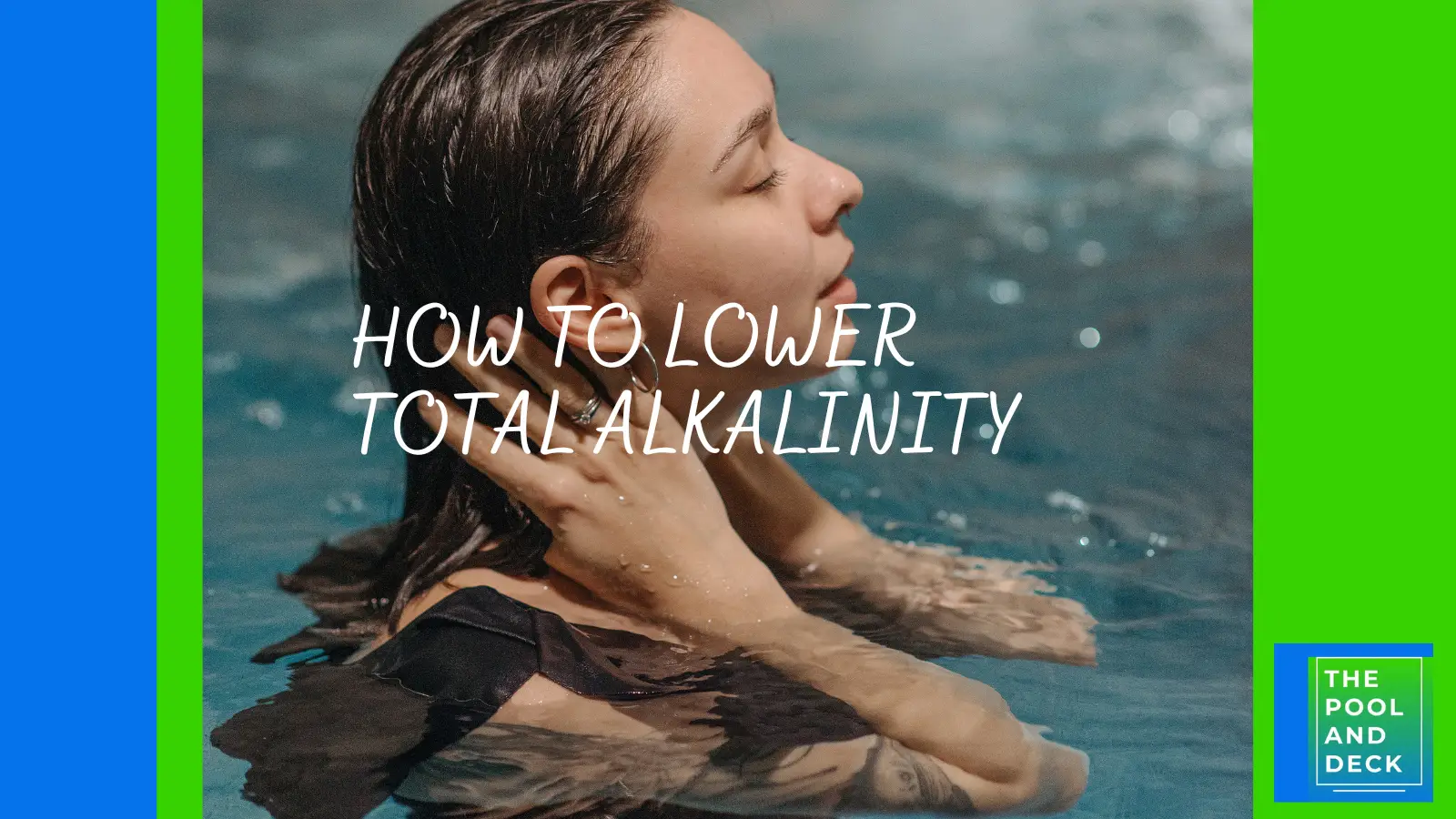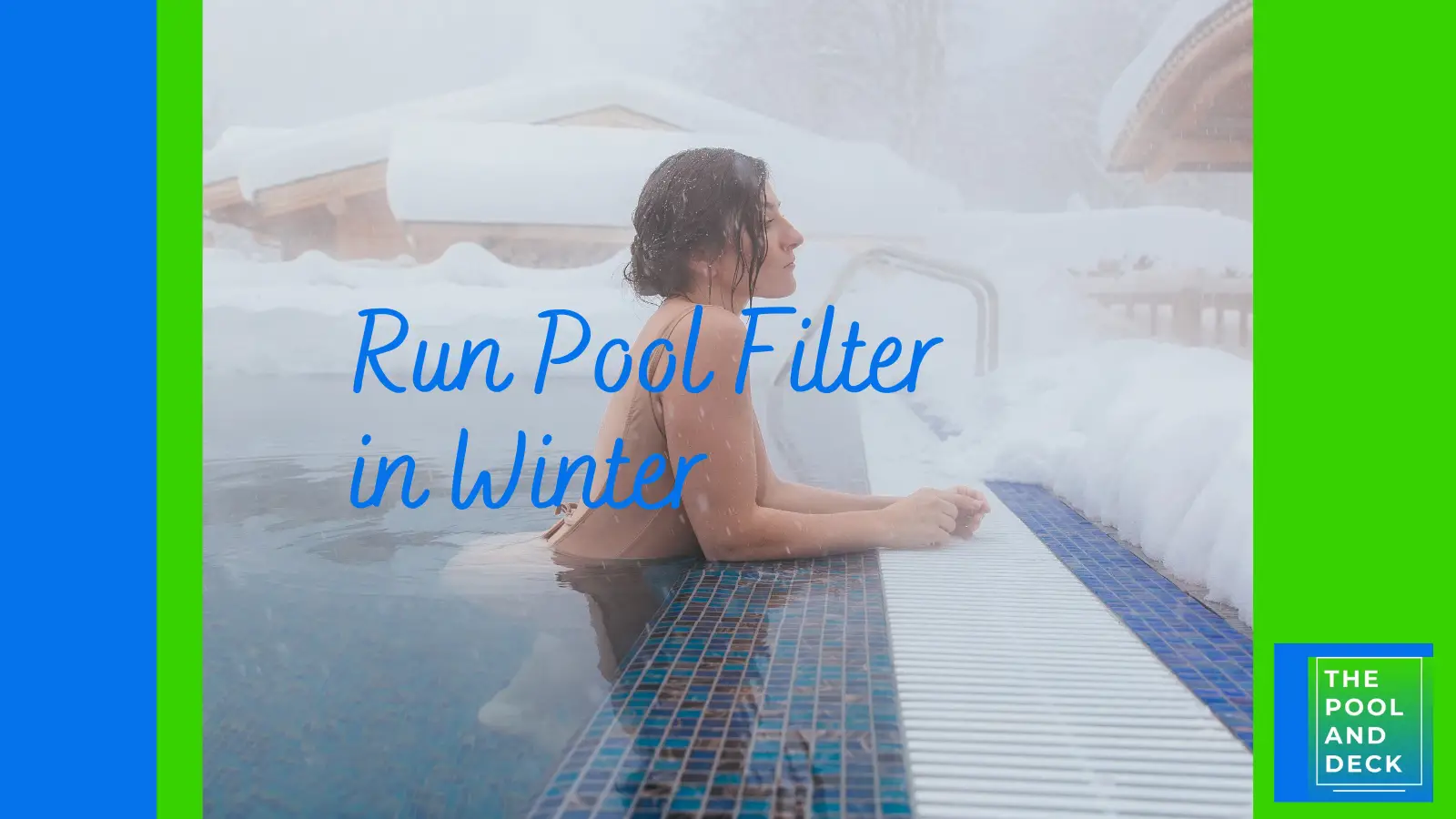Free Chlorine is Low: Cause, Effect & Solution
thepoolanddeck.com is a participant in the Amazon Services LLC Associates Program, an affiliate advertising program designed to provide a means for sites to earn advertising fees by advertising and linking to Amazon.com . The website is also an affiliate of a few other brands. The affiliate links never increase your purchase price. We do appreciate your support. Thank you very much!
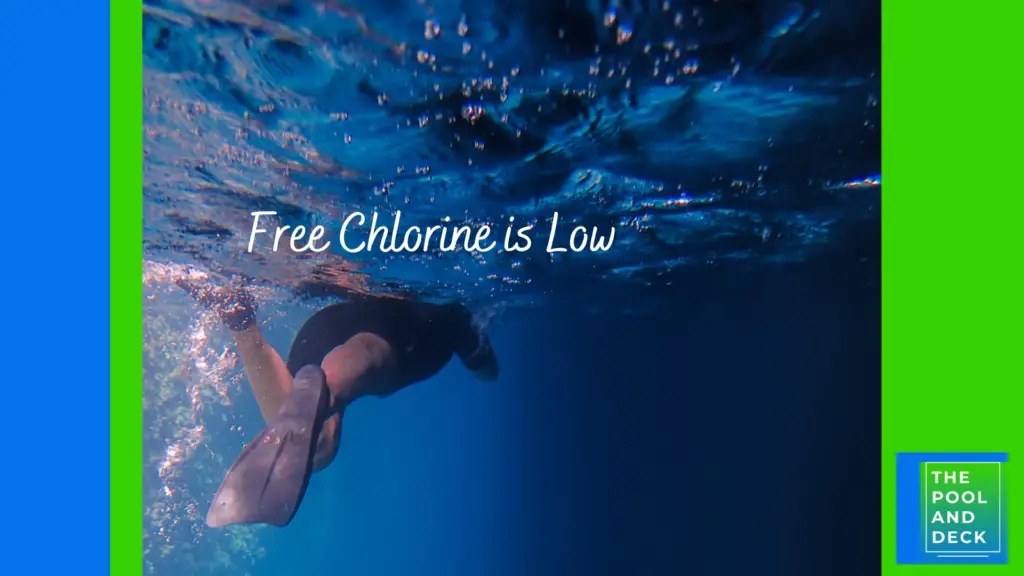
Table of Contents
What Does It Mean When Your Free Chlorine Is Low?
The recommended and safe level for Free Chlorine is 2 – 4 ppm. CDC recommends that free chlorine should not be allowed to drop below 1 ppm. Free Chlorine is low when the level drops below 1 ppm.
When your free chlorine is low, it means that your pool doesn’t have enough sanitizer to effectively kill bacteria and algae. This can lead to cloudy water, algae growth and waterborne illnesses.
For more information, read Pool Chemistry for Beginners: With 5 Super Helpful Cheat Sheets!
What is Free Chlorine?
Free chlorine is the amount of chlorine in your pool that is available to sanitize pool water. It’s the active, usable part of chlorine that can combine with bacteria and other contaminants and neutralize them.
When free chlorine levels drop below 1 ppm, the pool is at risk of becoming a breeding ground for bacteria and algae. But when free chlorine is high, that is over 5 ppm, the water becomes too acidic for comfort.
Maintaining the recommended level of free chlorine is essential for pool hygiene and swimmer safety. The recommended and safe level for free chlorine is 2 – 4 ppm.
For more information please check out What Is Free Chlorine in a Pool? Short & Easy to Understand Guide
Free Chlorine is Low: What Could be the Causes?
You are likely to find that free chlorine is low, when one or more of the following take place:
High Pool Usage:
When a pool is used frequently or by a large number of people, the amount of contaminants such as sweat, body oils, and sunscreen increases. In other words, the chlorine demand goes up.
The free chlorine in the pool reacts with and neutralizes the pathogens and the contaminants, forming combined chlorine or chloramines, which are less effective sanitizers.
An increase in pool usage results in an increase in chlorine demand. However, if the chlorine dosage remains the same then the increased chlorine demand can quickly deplete free chlorine levels. This is when the free chlorine levels may drop below the recommended level.
Sunlight Exposure:
Ultraviolet (UV) rays from the sun break down free chlorine in a process called photolysis, converting it into inactive components. Cyanuric Acid (CYA), a chlorine buffer, is added to the pool to prevent free chlorine depletion by the UV rays.
CYA may be a part of the chlorine, as in Dichlor or Trichlor or may be added seperately if CYA free chlorine such as Cal Hypo or Liquid Chlorine is being used.
This delicate balance can get disturbed if the chlorine buffer falls short of the recommended levels, the sunlight is stronger or the exposure is longer. Under such circumstances, common during hot summers, can result in a rapid decrease in free chlorine levels.
Improper pH Levels:
The effectiveness of free chlorine is influenced by the pH level of the pool water. If the pH is too high (above 7.8), the sanitizing power of free chlorine decreases, meaning it cannot effectively kill bacteria and algae.
This is because a higher pH causes more of the free chlorine to be present in the form of hypochlorite ions (OCl-) which are a weaker form of chlorine.
Maintaining a balanced pH (ideally between 7.4 and 7.6) is necessary for the optimal performance of free chlorine.
Temperature and Weather:
High water temperatures can accelerate the growth of algae and bacteria, which consume free chlorine. In other words chlorine demand goes up during summer.
Naturally, the pool utilization is the highest during the hot season. In addition, warmer pool waters are conducive to algae and bacteria growth. Stronger sunlight is also working at depleting free chlorine faster.
For free chlorine, summer is a triple whammy! If you don’t monitor the pool water chemistry, almost on a daily basis, you are very likely to end up with a free chlorine is low situation, quite frequently.
If that’s not bad enough, a thunderstorm accompanied by heavy rain can dilute pool water, reducing the concentration of free chlorine. You must certainly test and adjust your pool chemistry, after heavy rains, to ensure free chlorine levels are adequate.
Chemical Imbalance:
Other chemicals present in your pool can also affect free chlorine levels. For instance, high levels of cyanuric acid, a stabilizer used to protect chlorine from sunlight, can bind to free chlorine.
While this protects the chlorine from UV light, it also makes it less available for sanitizing the pool, effectively lowering the active free chlorine levels.
It’s important to regularly test not just for free chlorine and pH, but also for total alkalinity, calcium hardness, and cyanuric acid to ensure all levels are balanced. All these parameters are intricately related and must be maintained between their recommended levels.
Free Chlorine is Low: What are the Effects?
When free chlorine is low in your pool the effects can be quite harmful. Some of the problems that can arise due to low levels of free chlorine are:
- Algae Growth: When free chlorine levels are low, it can lead to the growth of algae in your pool. Algae are microscopic plants that can turn your pool water green and make surfaces slimy, creating an unpleasant swimming environment. They are also detrimental to swimmer health.
- Cloudy Water: Insufficient free chlorine will usually result in cloudy or murky pool water. This is often a sign of imbalanced pool chemistry, and it can make your pool look uninviting. It can also make it harder to see swimmers under the water, which is a safety concern.
- Waterborne Illnesses: Free chlorine is used for sanitizing your pool by killing harmful bacteria and viruses. If free chlorine levels are low, these pathogens can multiply, increasing the risk of waterborne illnesses like ear infections, diarrhea, and skin rashes.
- Irritation: Low free chlorine levels can lead to imbalanced pool water, which can cause skin, eye, and respiratory irritation for swimmers. This can make swimming uncomfortable and may discourage people from using the pool.
- Equipment Damage: Over time, low free chlorine levels can contribute to damage to your pool equipment. This is due to unchecked bacterial and algae growth, which can lead to corrosion and other forms of damage. This can result in costly repairs or replacements.
Free Chlorine is Low: How to Increase?
Certainly, here’s a more detailed guide on how to increase the levels of free chlorine in your pool water:
- Test Your Pool Water: Regularly testing your pool water is the first step in maintaining proper free chlorine levels. Use a reliable test kit or test strips to measure the free chlorine level. This will give you a clear understanding of whether you need to add more chlorine or if the current level is sufficient.
- Shock Your Pool: If the free chlorine level is significantly low, you may need to shock your pool. Shocking is a process that involves adding a large amount of chlorine (usually 5-10 times the normal amount) to the pool to quickly raise the free chlorine level. This helps to kill bacteria, algae, and other contaminants, and restores the effectiveness of the existing free chlorine.
- Adjust pH Levels: The effectiveness of free chlorine is heavily influenced by the pH level of the pool water. If the pH is too high or too low, it can reduce the sanitizing power of free chlorine. Therefore, ensure your pool’s pH level is maintained between 7.4 and 7.6. At this level, free chlorine is most effective.
- Use Stabilized Chlorine: Consider using stabilized chlorine products. These products contain cyanuric acid, which protects free chlorine from being broken down by sunlight. This means that your free chlorine will last longer, even in sunny conditions.
- Maintain Pool Cleanliness: Regular maintenance is key to reducing the demand for chlorine. This includes removing leaves and other debris from the pool, cleaning the pool filter, and brushing the pool walls and floor. This reduces the amount of organic material in the pool, which can consume free chlorine.
Remember, safety is paramount! Always follow the manufacturer’s instructions when handling pool chemicals, and store them in a safe, dry place out of reach of children and pets.
Tips to Prevent Low Free Chlorine Levels
Here are some tips to prevent low free chlorine levels in your pool in the future:
Recommended Chemical Test Kit
Taylor K-2005 Complete DPD 9-in-1 Test Kit
Tests for free & total chlorine, bromine, pH, total alkalinity, total hardness, and cyanuric acid (CYA) levels.
- Regular Testing: Test your pool water regularly. This helps you keep track of the free chlorine levels and make necessary adjustments.
- Proper Storage: Store your pool chemicals properly. Exposure to sunlight or heat can degrade chlorine products, reducing their effectiveness.
- Pool Circulation: Ensure your pool water is circulating properly. Good circulation helps distribute the chlorine evenly throughout the pool.
- Shock Treatment: Perform regular shock treatments. This helps to eliminate chloramines and restore free chlorine levels.
- Stabilizer Use: Use a stabilizer like cyanuric acid. It protects free chlorine from UV light, helping to maintain its levels.
Recommended Cyanuric Acid Free Shock (Cal Hypo)
HTH 52037 Pool Care Shock Advanced
A fast-dissolving, convenient 4-in-1 Cal Hypo formula that kills bacteria & algae, reduces chlorine odor & irritation, and quickly restores crystal clarity.
Thank you very much for reading the post. I do hope you found it informative and helpful.



